
A mainstay in herbal gardens the world over, basil (Ocimum basilicum) is an intensely fragrant culinary herb in the mint family.
Basil is a sun loving plant, native to the tropical regions of Africa and Asia. When given ample amounts of warmth and light, basil is a fast grower that will provide more than enough tasty leaves for making a myriad of delicious foods.
Prune it the right way throughout the season and basil will bounce back after each harvest with renewed vigor.
Because basil cross breeds so readily with other members of the Ocimum genus, there are no less than 60 varieties of cultivated basil. These hybrids (which even include hybrids of hybrids!) offer a lot of choice for growing this tender herb.
There are so many flavors, colors, sizes, and shapes within the kingdom of basil. If you’d like to expand your basil world, try growing some of the more unusual varieties:
1. Sweet Basil
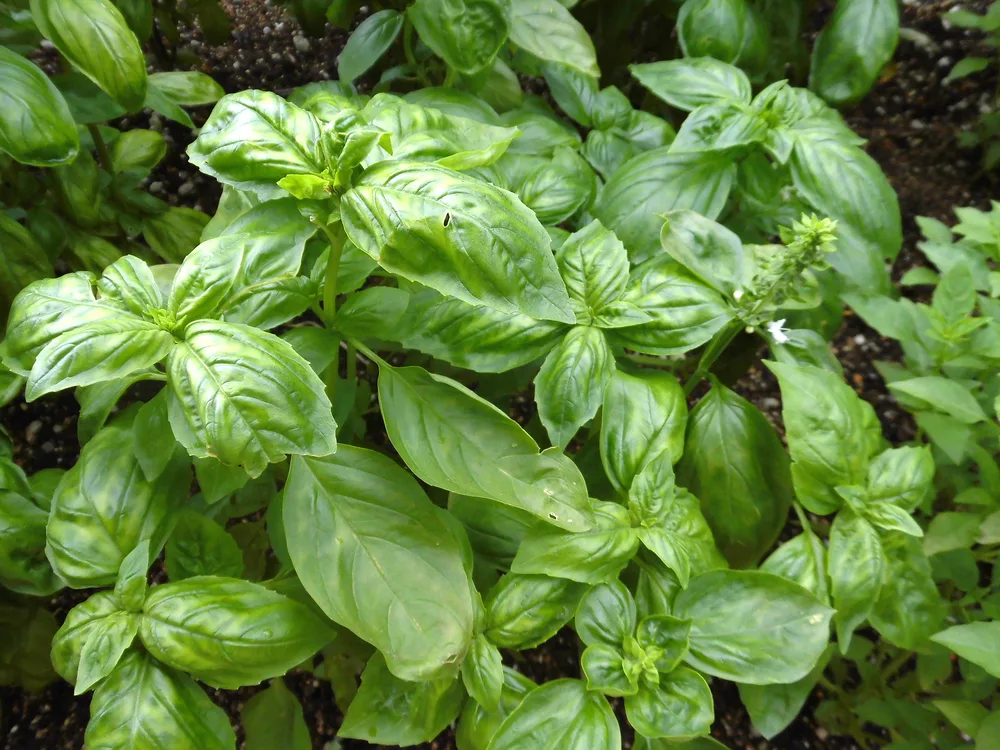
A favorite among gardeners and cooks, sweet basil is the most common and familiar type, with rounded, bright green leaves that have a pungent, clove-like, and peppery taste.
Sweet basil is often used in tomato sauces, soups, salads, and infused oils, but it is so very versatile. Try adding sweet basil to hot and cold teas, meat and veggie marinades, and ice creams and desserts.
Since many other culinary basil varieties come from a crossing with sweet basil, you could say it’s the mother of all basil plants.
If you’re interested in a challenge, try planting different varieties of basil near each other to discover new flavors and scents. Harvest these seeds at the end of the season for a unique set of basils to grow the following spring.
2. Genovese Basil
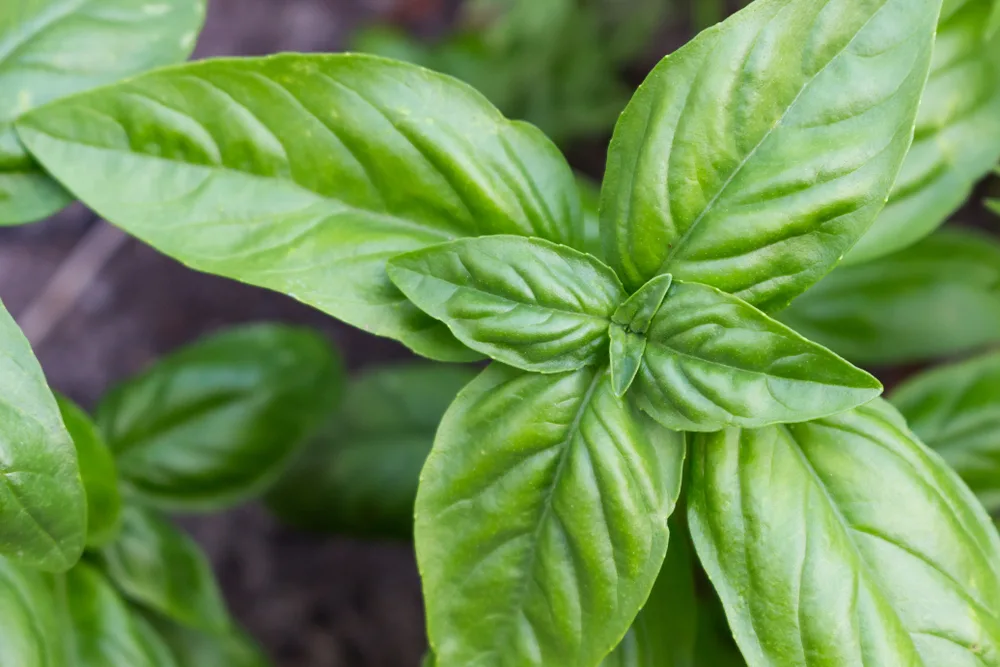
Hailing from Italy, Genovese basil is similar in appearance but its leaves are longer, flatter, and pointier than sweet basil.
Genovese basil also has a stronger, more aromatic flavor than the sweet variety, best reserved for making pestos.
3. Lettuce Leaf Basil
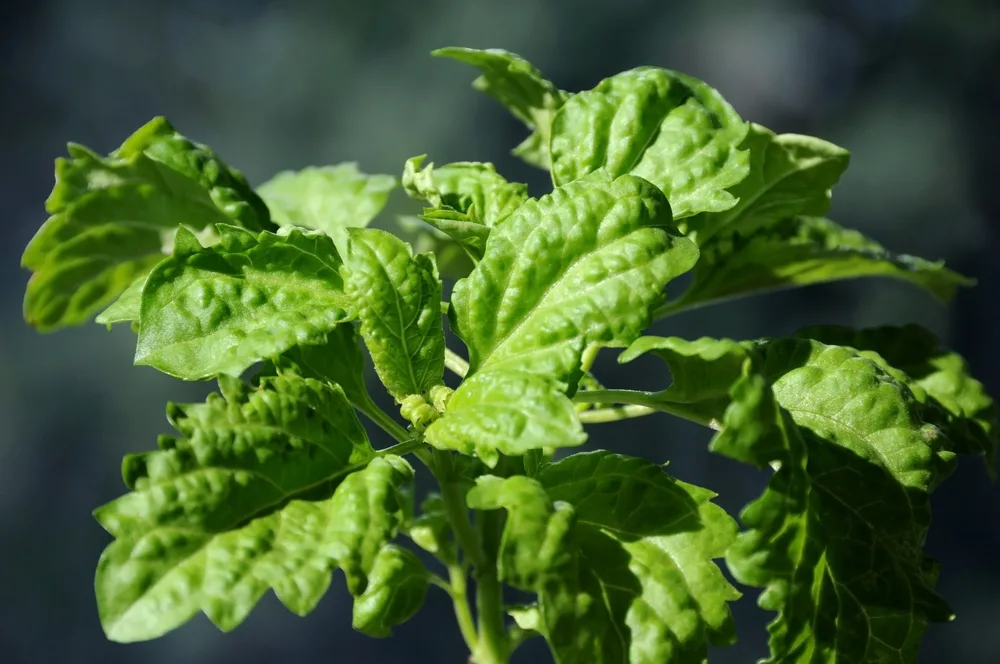
Lettuce leaf basil produces large, wrinkly leaves that grow up to five inches in length.
Although this variety has the same aromatic properties as classic basils, it is much milder in taste.
Its gentle flavoring makes it a wonderful addition to fresh salads and sandwiches. Use it in lieu of tortillas or lettuce when making savory wraps and rolls.
4. Thai Basil
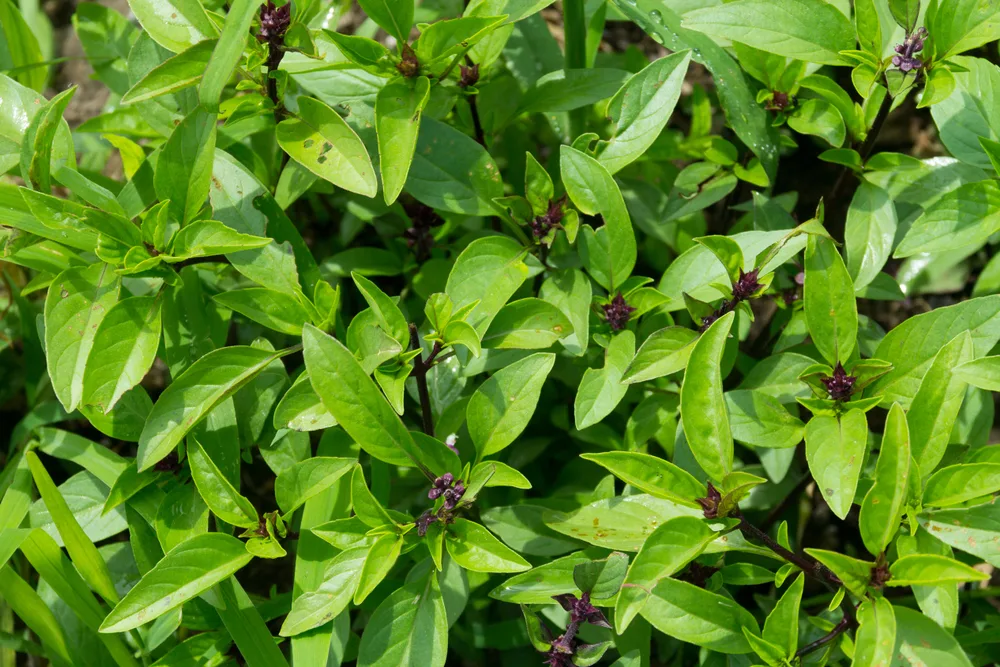
As ornamental as it is delicious, Thai basil features narrower green leaves along a purple stem with striking plum colored blooms.
Its flavor profile is also unique, slightly spicy with a licorice like undertone.
Thai basil is used generously in Southeast Asian cuisine, in green and red curries, pho, and pad krapow gai.
5. Cardinal Basil
A type of Thai basil but with larger leaves, cardinal basil is a definite show stopper.
Not only are the clove and cinnamon flavored foliage a pleasure to cook with, cardinal basil blooms with handsome, deep scarlet floral cones that add a lot of visual interest to the garden.
Allow the blooms to mature and they make for fantastic cut flowers for an impressive indoor display.
6. Purple Basil
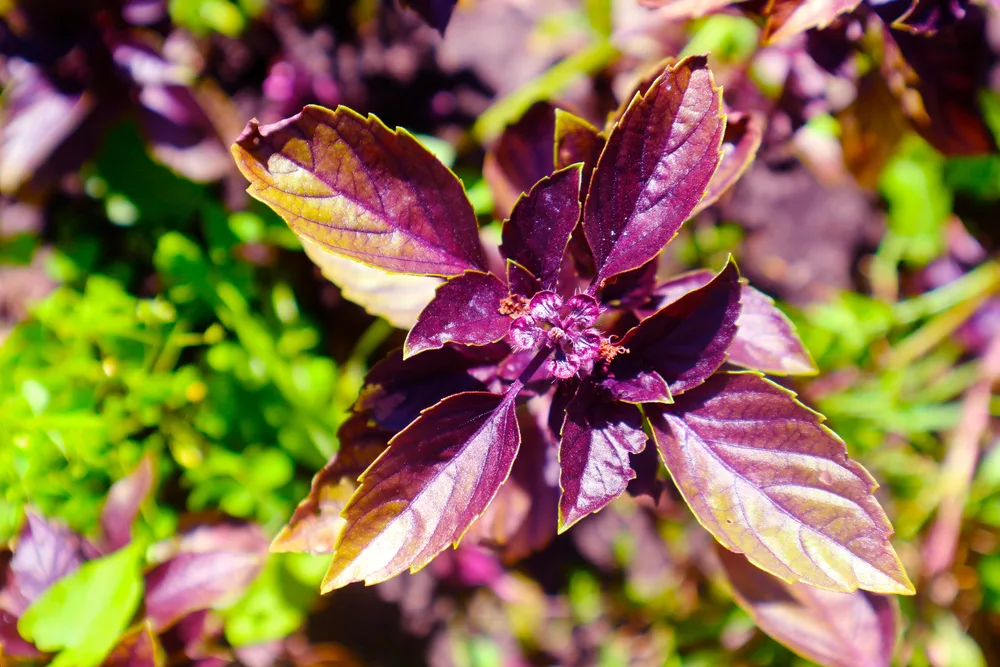
Another beautiful cultivar, purple basil’s foliage starts out green but will eventually turn into a deep burgundy hue. Popular varieties include ‘Dark Opal’ and ‘Purple Ruffles’.
Its rich purple pigment is thanks to a high concentration of health promoting anthocyanins.
Purple basil hints of cloves with a little spiciness. Use it to add some color and flavor to vinegars and oils, dips and spreads, or whip up a batch of purple basil lemonade.
7. Lemon Basil
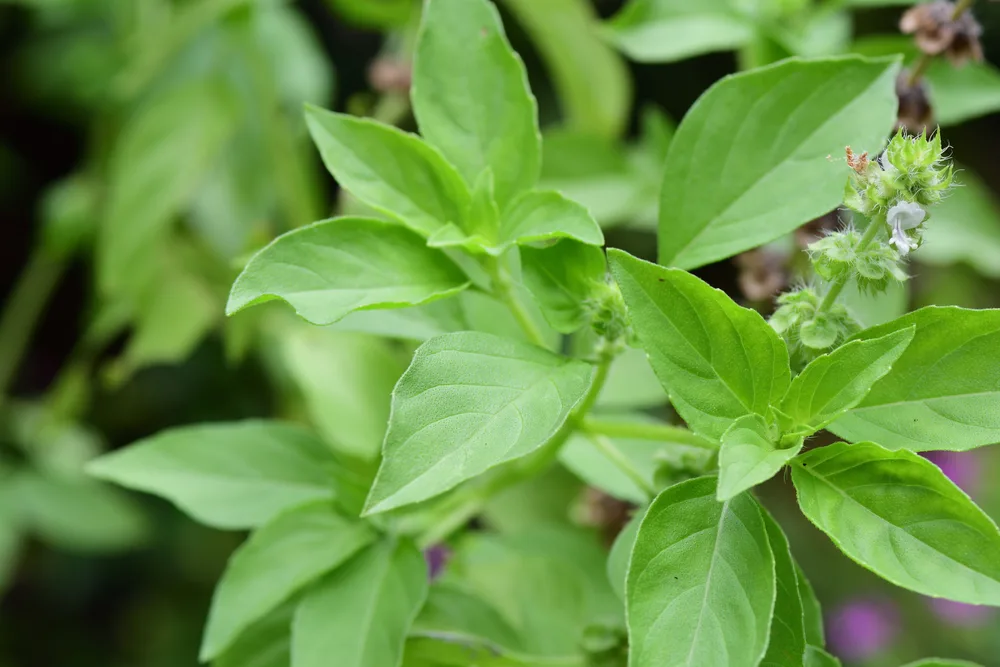
Combining the sweet flavoring of basil with a light citrusy fragrance, lemon basil is a hybrid of sweet basil and American basil, a non-culinary type used in traditional medicine.
Lemon basil adds a pleasing tangy note to soups, stews, sauces, and stir fries. It’s also delectable with baked or sautéed fish, chicken, and pork.
8. Greek Basil
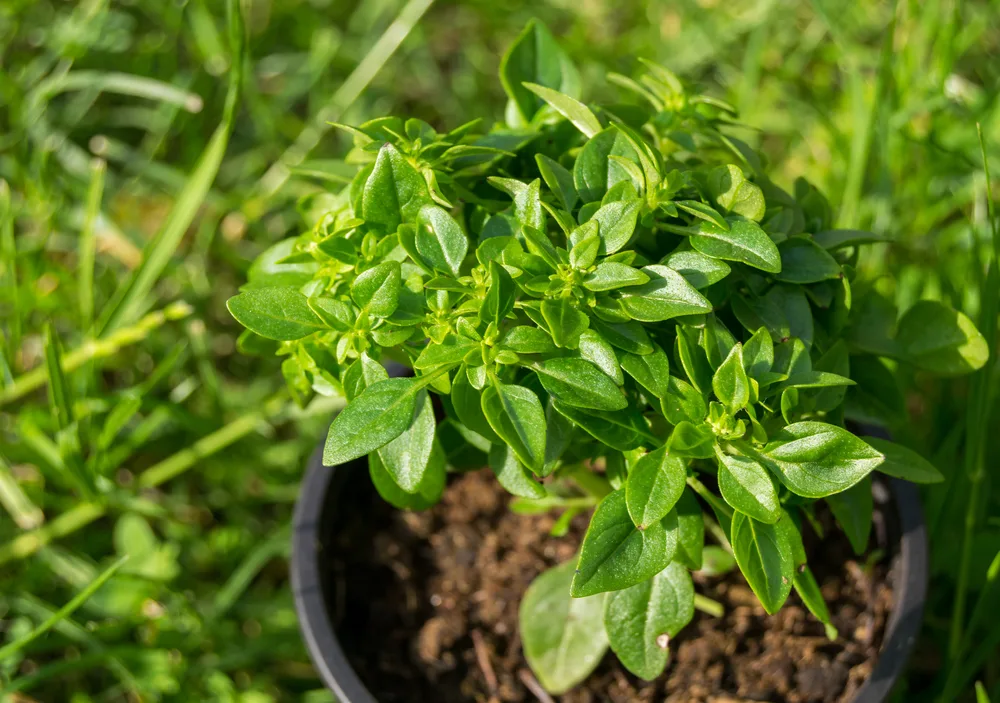
Growing to a height of just 8 inches, Greek basil is one of the smallest, most compact varieties.
Greek basil’s rounded shape looks great in containers or as a border plant among low growing flowers.
Despite its small stature, Greek basil packs a wallop in terms of flavor. Spicier than other types of basil, it is quite strong raw but mellows considerably when heated in sauces and teas.
9. Christmas Basil
The progeny of Thai and Genovese basils, Christmas basil has the classic glossy green leaves but blooms in a profusion of deep purple to mauve flowers.
Its scent and flavor can only be described as spicy and fruity, reminiscent of mulled wine – hence its festive name.
10. Cinnamon Basil
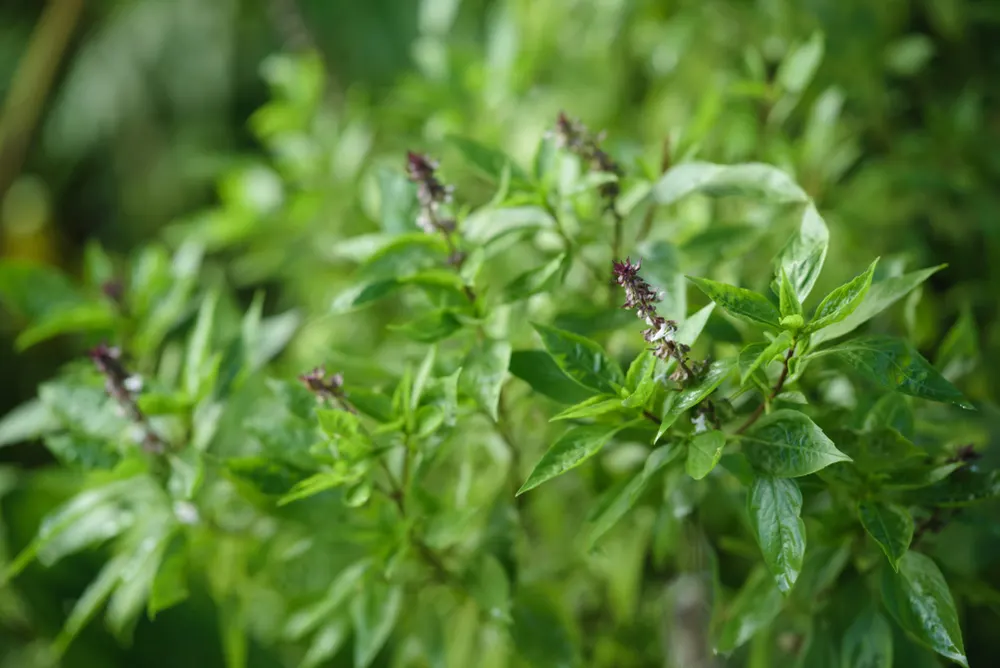
As you might expect, cinnamon basil has the spicy aroma of cinnamon due the presence of methyl cinnamate within its foliage.
Also known as Mexican spice basil, this type is best used in cookies, pies, and other baked goods, as well as in sweet sauces and jams.
11. Holy Basil
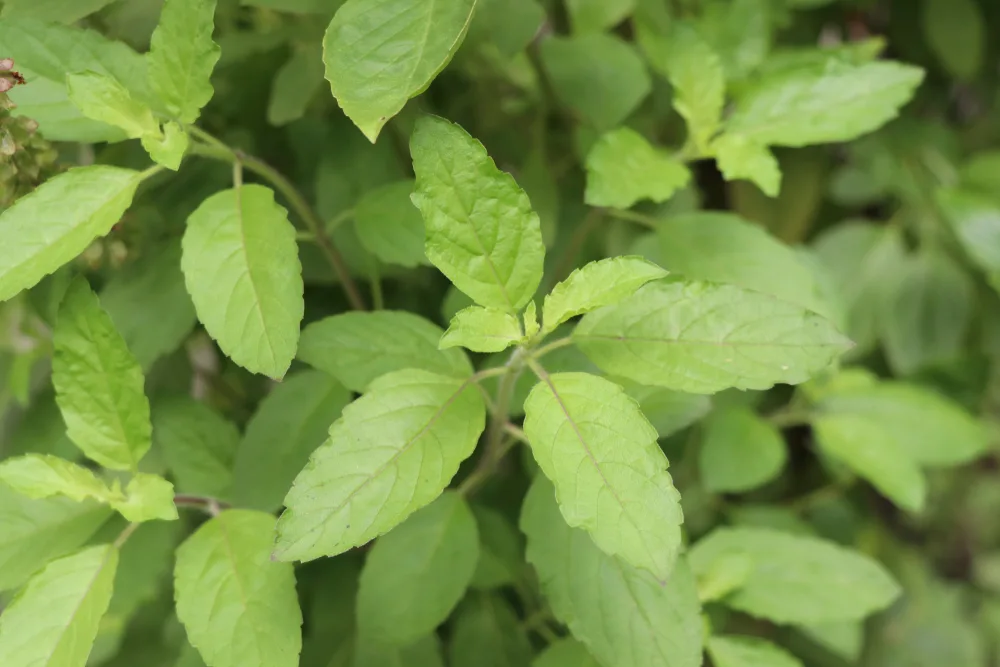
Holy basil – or tulsi – is native to India with a long history of use as a traditional herbal medicine.
Often brewed into a tea in Ayurveda, holy basil holds a sacred place in Hinduism where the plants are considered to be the manifestation of god in the vegetable kingdom.
With a shrub like habit, holy basil reaches heights of 2 feet tall, with purplish green leaves and floral spikes that burst with pink blooms.
12. Fino Verde Basil
With much smaller leaves than other types of basil, fino verde is a dense and bushy plant with that telltale sweet and spicy fragrance.
Maturing to 6 to 12 inches in height, its mounding growth habit and tiny leaves makes fino verde an attractive addition to your herbal garden.
13. Boxwood Basil
Gorgeous and edible, boxwood basil produces tight and compact branches that are similar in appearance to a boxwood shrub.
Its rounded, upright form lends itself well to being pruned into rounded or square shapes – it can even be trimmed into topiaries.
Use its small leaves for any dish you would normally add sweet basil.
14. Green Ruffles Basil
With deeply lobed, frilly leaves, green ruffles basil is more akin to arugula than common basil in appearance.
Its flavor profile is quite unique too – a bit of anise, a touch of cinnamon, and a slight hint of citrus.
For a milder taste, try the anthocyanin-rich purple ruffles variety.
15. Pistou Basil
Pistou is France’s answer to Italian pesto, a cold sauce made from garlic, olive oil, and basil, traditionally creamed by hand with mortar and pestle.
Specially bred for this sauce, pistou basil is a dwarf variety with a mild taste. Its flavor is earthy and sweet, so it can be used for many other kinds of dishes.
Read Next: How To Freeze Basil To Enjoy All Year Long

Get the famous Rural Sprout newsletter delivered to your inbox.
Including Sunday musings from our editor, Tracey, as well as “What’s Up Wednesday” our roundup of what’s in season and new article updates and alerts.

